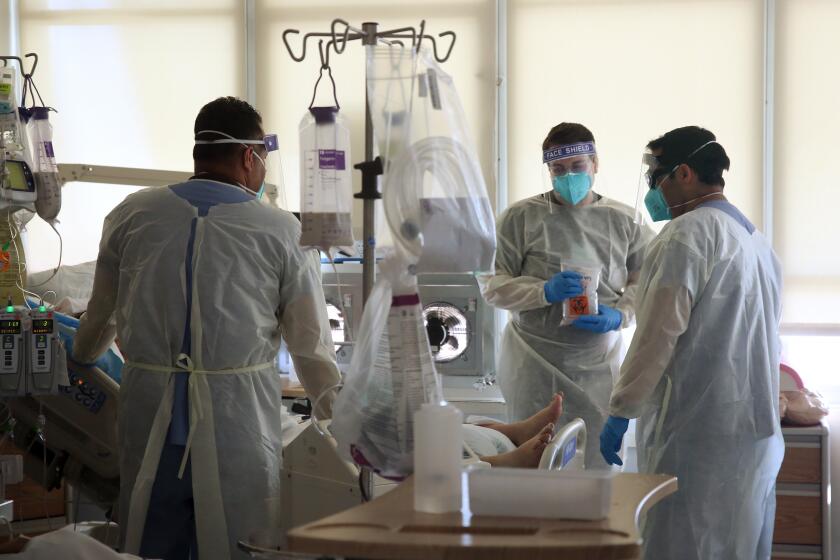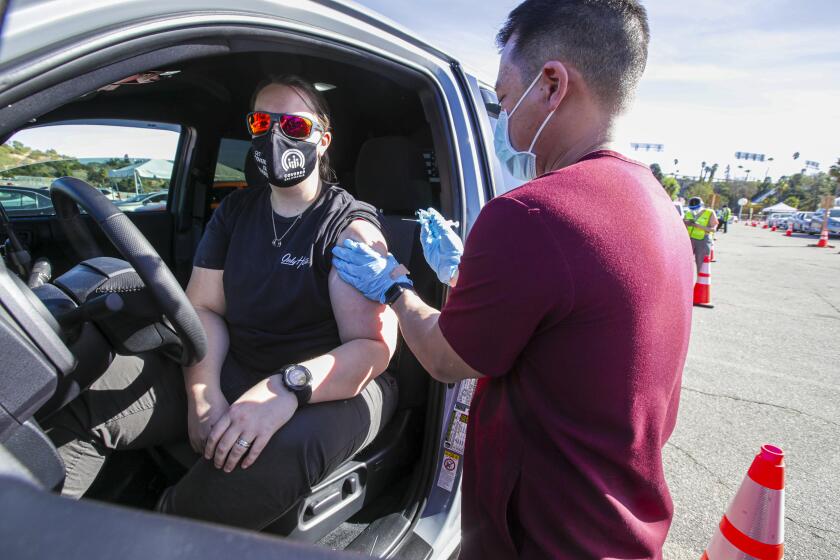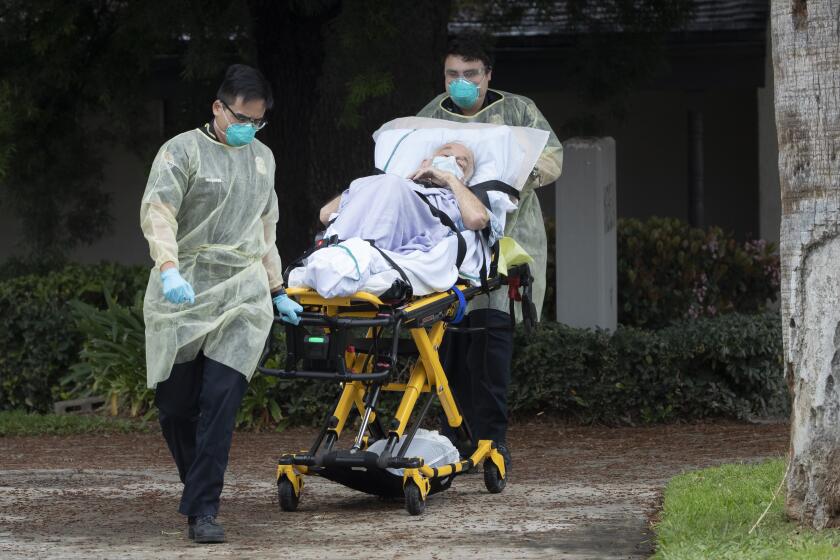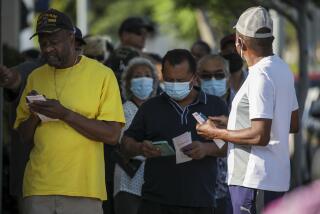Daily COVID-19 death count soars to new heights in California
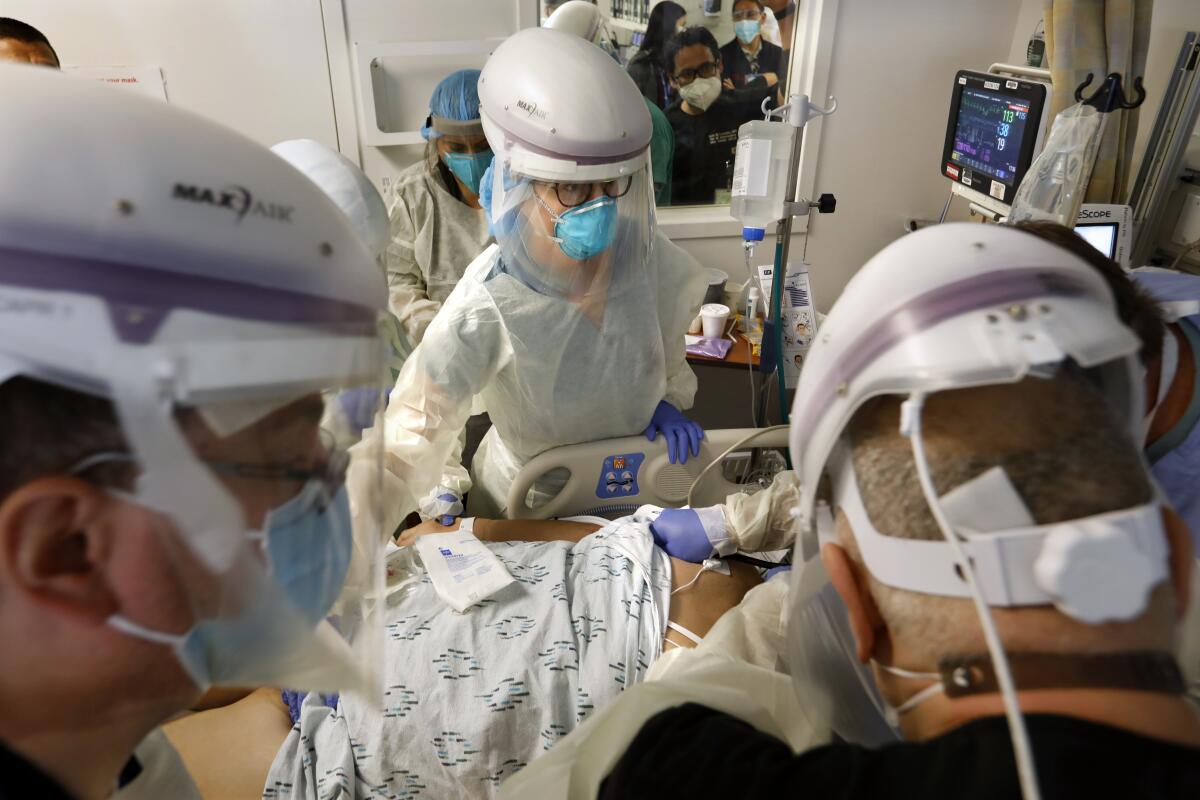
More than 530 Californians are now dying every day from COVID-19, pushing several counties past new, grim milestones.
Just this week, Santa Clara County and Sacramento County each reported its 1,000th cumulative COVID-19 death, while San Diego County notched its 2,000th.
And Los Angeles County, long the epicenter of California’s coronavirus outbreak, officially surpassed 13,000 pandemic-related fatalities Thursday — a death toll larger than all but nine states.
“When we ask our residents to stay home and follow the rules and businesses to follow the health officer orders, it is to stop the loss of life from COVID-19,” L.A. County Public Health Director Barbara Ferrer said in a statement. “This disease is running rampant right now, and we continue to plead with residents, businesses and government, the community, to do all possible to stop the spread.”
L.A. County races to vaccinate as many people as possible against the coronavirus before a strain thought to be even more contagious takes hold.
More than 6,300 Californians have died from COVID-19 since New Year’s Day, a two-week total that represents roughly 20% of the state’s 32,300-plus total of coronavirus-related fatalities.
The most-populous state in the union now has the country’s second-highest COVID-19 death toll, behind only New York, according to data compiled by The Times. Overall, California still has the 13th-lowest death rate among states when adjusting for population — with about 83 coronavirus fatalities per 100,000 residents.
That figure belies just how fast the death toll has been climbing recently, however.
Over the last week, an average of 534 residents have died from COVID-19 every day, a rate that’s risen 84% from two weeks ago and is the highest ever seen in the pandemic.
On Thursday alone, local health jurisdictions in California reported 637 deaths — the third-highest single-day tally so far. The three highest one-day fatality totals have all been reported within the past week.
Among the recent fatalities was a 19-year-old man in San Diego County, who local health officials said was their youngest resident yet to die from COVID-19 complications.
“We understand that the pandemic has been trying on the community, but today’s report is a reminder that we must do everything we can to protect each other and slow the spread of COVID-19,” public health officer Dr. Wilma Wooten said in a statement Thursday.
Dr. Sara Cody, Santa Clara County’s health officer and public health director, called reaching 1,000 total deaths “a devastating and tragic milestone for our community.”
“We mourn each life lost, and our goal continues to be to save as many lives as possible,” she said in a statement. “The harsh reality is that COVID-19 continues to be extremely widespread in our county and throughout the state. Even though we’ve all been sacrificing for almost a year to fight this virus, prevent infections and return to our normal lives, we must remain vigilant or we will see more deaths and extreme challenges for our hospitals and healthcare systems.”
Dodger Stadium and other mass vaccination sites will be key in California’s effort to accelerate its COVID-19 vaccination rate.
Deaths represent the chilling, but inescapable, conclusion of COVID-19’s crushing trajectory.
As more people become infected, more people will require hospitalization and, eventually, more will perish. The only way to prevent devastation down the line, officials say, is to reduce transmission to begin with.
Though the number of COVID-19 patients hospitalized statewide has stabilized somewhat over the past week or so — sparking cautious optimism in some corners that the long-feared post-holiday surge may not be as severe as once projected — the coronavirus remains rampant.
California has recorded about 44,000 new coronavirus cases a day over the last week, including 40,865 on Thursday.
Officials estimate that roughly 12% of those infected will require hospital care at some point, meaning that new waves of people will need professional care in the weeks to come.
“The problem, of course, is that those numbers are already cooked. They’re already done. The viral spread has already occurred,” said Carmela Coyle, president and chief executive of the California Hospital Assn. “And we in the healthcare delivery system can’t change those numbers of positive infections. All we can do is be prepared to catch those who are now in need of acute care.”
Only 5% of residents living in California’s long-term care homes had been vaccinated as of Sunday, data show.
At the current rate, California will record its 3 millionth cumulative coronavirus case in a matter of days. L.A. County is approaching 1 million.
There are some signs, however, that the situation in L.A. County is no longer deteriorating as dramatically as it once was.
The average number of daily new cases countywide trended upward from Jan. 4 through Wednesday, topping out at an average of 15,102 a day. By Friday morning, the rate dipped slightly, to a rolling average of 14,839 new cases a day.
However, it’s too soon to say whether this a momentarily blip or a hopeful sign of progress.
Given the stubbornly high case counts, L.A. County officials have said they are weighing potential new health orders aimed at stymying the spread of the disease.
Settings that could face further restrictions include outdoor gyms, which have been allowed to open at 50% capacity, and indoor malls and retail establishments, which are supposed to be open at only 20% capacity, L.A. Mayor Eric Garcetti said Thursday night.
Dr. Mark Ghaly, California’s health and human services secretary, said Thursday that there are scenarios in which pursuing additional restrictions would make sense. But, he said, any new rules have to be part of a balanced overall approach.
“There’s plenty of Angelenos who haven’t felt the brunt of COVID yet, and they are ripe to be infected and have major spread in their communities,” he said. “I do think that focusing on the messaging and the compliance with some of the existing restrictions, as well as an important drive toward masking and harm reduction … those sort of messages, I think should also break through with any additional restrictions.”
More to Read
Sign up for Essential California
The most important California stories and recommendations in your inbox every morning.
You may occasionally receive promotional content from the Los Angeles Times.
